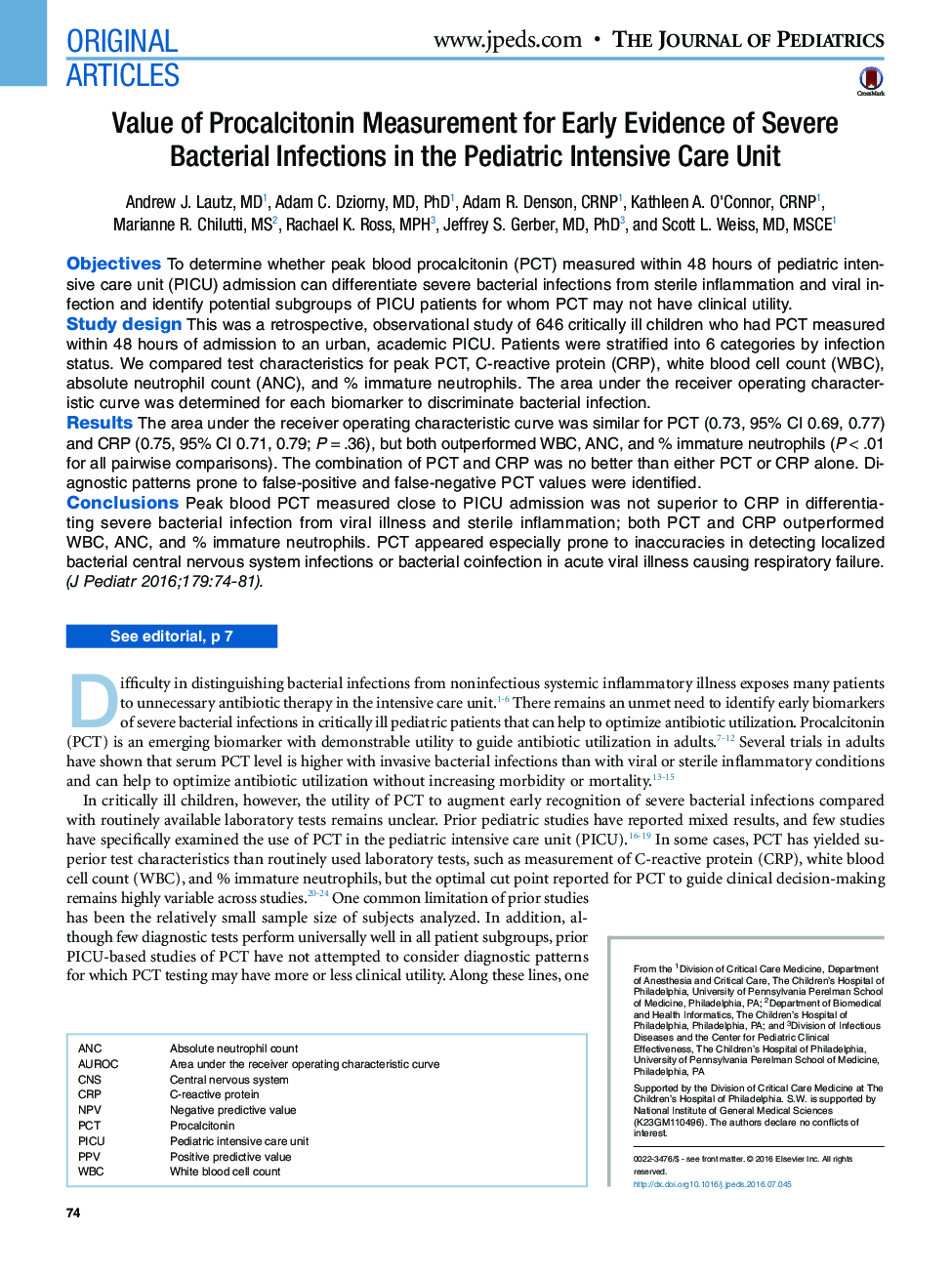| Article ID | Journal | Published Year | Pages | File Type |
|---|---|---|---|---|
| 5719514 | The Journal of Pediatrics | 2016 | 10 Pages |
ObjectivesTo determine whether peak blood procalcitonin (PCT) measured within 48 hours of pediatric intensive care unit (PICU) admission can differentiate severe bacterial infections from sterile inflammation and viral infection and identify potential subgroups of PICU patients for whom PCT may not have clinical utility.Study designThis was a retrospective, observational study of 646 critically ill children who had PCT measured within 48 hours of admission to an urban, academic PICU. Patients were stratified into 6 categories by infection status. We compared test characteristics for peak PCT, C-reactive protein (CRP), white blood cell count (WBC), absolute neutrophil count (ANC), and % immature neutrophils. The area under the receiver operating characteristic curve was determined for each biomarker to discriminate bacterial infection.ResultsThe area under the receiver operating characteristic curve was similar for PCT (0.73, 95% CI 0.69, 0.77) and CRP (0.75, 95% CI 0.71, 0.79; Pâ=â.36), but both outperformed WBC, ANC, and % immature neutrophils (Pâ<â.01 for all pairwise comparisons). The combination of PCT and CRP was no better than either PCT or CRP alone. Diagnostic patterns prone to false-positive and false-negative PCT values were identified.ConclusionsPeak blood PCT measured close to PICU admission was not superior to CRP in differentiating severe bacterial infection from viral illness and sterile inflammation; both PCT and CRP outperformed WBC, ANC, and % immature neutrophils. PCT appeared especially prone to inaccuracies in detecting localized bacterial central nervous system infections or bacterial coinfection in acute viral illness causing respiratory failure.
